

Peace Buildings Around the World
Click here for peace towers.
Click here for peace museums.
Click here for peace chapels, churches & temples.Right click image to enlarge.

1722 - Fredensborg Slot Castle, near Copenhagen (Denmark).While the building was still under construction Denmark and Sweden negotiated a peace treaty, which was signed July 3, 1720 on the site of the unfinished palace. To commemorate the signing, the palace was named Fredens Borg / Palace of Peace.


1796 - Peacefield, Quincy, Massachusetts (USA). "I think to christen my place Peacefield, in commemoration of the peace which I assisted in making in 1783, of the thirteen years peace and neutrality which I [as Vice President] have contributed to preserve, and of the constant peace and tranqualitry which I have enjoyed in this residence." -- John Adams [1735-1926].

1815 - Chateau de la Paix / Castle of Peace, Ville de Fleurus (Belgium). Plaque in front reads: "Dans ce chateau dit Chateau de la Paix, NAPOLEON a établi son quartier géneral dans la nuit du 16 au 17 juin 1815 apres la victoire de LIGNY sous FLEURUS. Société Belge d'Etudes Napoleoniennes." /// N.B.: "La Bataille de Ligny se déroula le 16 juin 1815, soit deux jours avant la bataille de Waterloo. Ligny fut la dernière victoire de Napoléon."
Before 1839 - Château Allaman / Allaman Castle, Allaman, Vaud (Switzerland). "Has its origins in the 11th Century but the main components were built by the Count of Vaud in 1253. The wealthy Genevan philanthropist Jean-Jacques de Sellon [1782-1839], who owned the property until 1839, gave accommodation at the castle to, amongst many others, such political refugees as Napoleon's brother Joseph Bonaparte, Joséphine de Beauharnais, the Duke of Bassano, the Count Camille Cavour, Voltaire as well as to Franz Liszt & George Sand. In 1820 [sic], de Sellon founded the Society of Peace, forerunner of the League of Nations & the United Nations Organization (UN). Since then, the Castle has also been referred to 'The Castle of Peace,' & Sellon was also instrumental in the abolition of the death penalty in Switzerland. One of the largest private properties of Switzerland, the private estate covers over 330,000 square metres (33 hectares; 82 acres) and offers some 6,000 m2 (65,000 sq ft) of living space. It is surrounded by private forests, parks, gardens & Grand Cru vineyards."

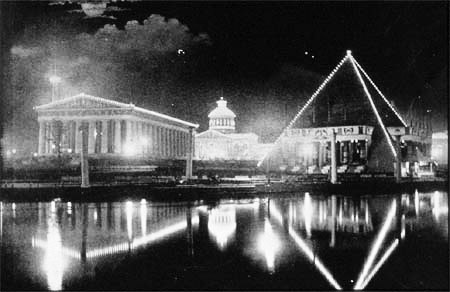

1897 - Negro Building, Tennessee Centennial Exposition (now Centennial Park), Nashville, Tennessee (USA). No longer exists. "Largest-ever display of African-American life and achievement." From dedication speech: "Here...the world may see the other side of Negro life than 'Sam Johnson, the chicken thief.' Here it may see the healthful buds of Negro handicraft, Negro art, science, literature, invention... Here... the old master who followed Lee's tattered banners... down to Appomattox sacrifices his pro-slavery ideas, and builds a monument to Negro fidelity and industry; and here the Negro brings the product of his brain and hand in grateful testimony to the friendly feelings between us."



1897 - Woman's Building, Tennessee Centennial Exposition (now Centennial Park), Nashville, Tennessee (USA). No longer exists. Site near the fair's full-scale reproduction of the Parthenon is marked by a subsequent monument with a sphere on top. Its plaque contains two quotations by Mrs. Van Leer (Kate) Kirkman, President, Woman's Department: "That that is round can be no rounder" and "Women's Work. Whatever may be necessary to preserve the sanctity of the home and ensure the freedom of the state." Right image by EWL.
August 28, 1913 - Vredespaleis / Peace Palace, Carnegieplein 2, The Hague (Netherlands). Constructed just before World War I by the Carnegie Foundation -- and still owned by the Carnegie Foundation. Now home of the International Court of Justice (ICJ) or World Court, the Permanent Court of Arbitration (PCA), the Peace Palace Library, and the Hague Academy of International Law.


February 1914 - Church Peace Union (CPU), Merrill House 170 East 64th Street, New York City, New York (USA). "The CCEIA was founded in New York City in 1914, when Andrew Carnegie [1835-1919] assembled a group of leaders in religion, academia and politics and appointed them trustees of an organization named the Church Peace Union (CPU). Through the CPU, Carnegie hoped to mobilize the world's churches, religious organizations and other spiritual and moral resources to join in promoting moral leadership and finding alternatives to armed conflict. William P. Merrill [1867-1954], pastor of New York's Brick [Presbyterian] Church, became the first president of the CPU. The timing of its founding was significant. On the very eve of World War I, Carnegie sought to make war obsolete for all time. For its inaugural international event, the CPU sponsored a conference to be held on August 1, 1914, [at Lindau] on the shores of Lake Constance in southern Germany. As the delegates made their way to the conference by train, Germany was invading Belgium... In 1961, the CPU was renamed Council on Religion & International Affairs (CRIA)... In 2005, the Council changed its name to Carnegie Council for Ethics in International Affairs (CCEIA)."
1919 - Peace Memorial Hall, Heroes Square, George Town (Grand Cayman Islands). Built imediately after World War I in the heart of Old George Town. Click here for other monuments named "peace memorial."
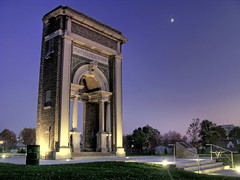

1921 - Peace Memorial School, 85 East 36th Street, Hamilton, Ontario (Canada). Only the portico (in the shape of a triumphal or memorial arch) was preserved when the 84-year old school was demolished in the Summer of 2005. The site is now called Peace Memorial Park and is under development.
P
A
R
K
Future - Peace Memorial Park, 85 East 36th Street, Hamilton, Ontario (Canada). "This 2.17 hectare (5.37 acre) former Peace Memorial School site is being re-developed as a passive neighbourhood park. Peace Memorial School [qv] was constructed in 1918 [sic] as a memorial to those who gave their lives during the First World War."
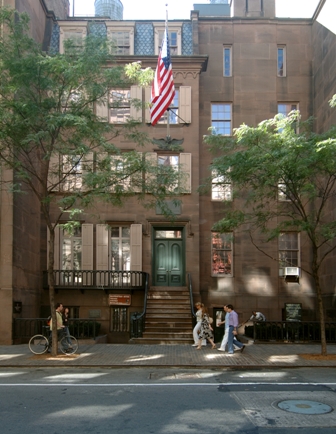

1923 - Theodore Roosevelt Birthplace National Historic Site, National Park Service (NPS), 28 East 20th Street (between Park Avenue South & Broadway), New York City, New York (USA). Demolished in 1916. Rebuilt in 1919 by the Women's Roosevelt Memorial Association. Rededicated in 1923 and subsequently refurbished with many furnishings from the original house by the President's widow, Edith, and his two sisters. Theodore Roosevelt [1858-1919] was US President 1901-1909 and received the 1906 Nobel Peace Prize.

1925 - Beit el-Amani / Peace Memorial Museum, Mnazi Moja, Stone Town (Zanzibar). Built in memory of those who died in World War I. " the British extended their ideas of ‘indirect rule’ even to the architecture of the early colonial monumental buildings. The museum was therefore designed [by British architect J.H. Sinclair] as an oriental Islamic structure, reminiscent of the Aya Sophia Mosque in Istanbul, a hexagonal building with a huge central dome and smaller domes at the corners." Now [contains] traditional crafts and household items from residents of Zanzibar, sultans, slave traders, European explorers and missionaries. Displays feature David Livingstone's medical chest, information about the harvesting of cloves, and the story of the German battleship Konigsberg which sunk during World War I.
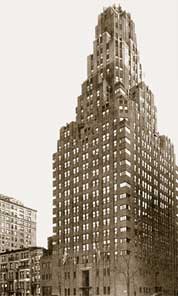

October 1929 - Roerich "Skyscraper-Museum," Master Building, Riverside Drive, New York City, New York (USA). "On the first three floors were situated all the Roerich Institutions, including the Museum, and on all the other floors were apartments for rent to students, teachers, and anyone who wanted to be part of a cultural community." Designed by Harvey Wiley Corbett [1873-1954], the skyscraper "is uniquely graduated in tone from deep purple at the base to white at the top, symbolizes 'growth,' houses more than 1,000 of Prof. Roerich's exotic paintings, is dedicated to international culture, world peace." Click here for a colorful account of the museum's official opening in Time Magazine. Click here for more information. Museum ended in 1938 (click here for more information). N.B. In 1921, Corbett designed the Peace Arch (qv) between British Columbia (Canada) & Washington state (USA).



1930's - "Peace" (Father Devine Peace Mission), Crum Elbow Estate, Hudson River, New York (USA). "Landing & exterior view of Father Divine's religious mission next to barn with 'PEACE' painted on the side on the banks of the Hudson River." "Father Divine [c1876-1965], also known as Reverend M.J. Divine, was an African American spiritual leader from about 1907 until his death. He founded the International Peace Mission movement, formulated its doctrine, and oversaw its growth from a small and predominantly black congregation into a multiracial and international church." Photos from Life Magazine, September 1939.
1936 - Palais des Nations / Palace of Nations, Geneva (Switzerland). Built for the League of Nations. Since the 1950s, it has served as the home of the UN Office at Geneva.

November 23, 1938 - Welsh National Temple of Peace and Health (Temple of Peace), Cardiff (Wales). A non-religious civic building designed by the architect Sir Percy Thomas. Across the street from the National Assembly.



S
H
O
P
October 26, 1945 - Housmans Bookshop, Peace House, 5 Caledonian Road, Kings Cross, London (England). "London's premier radical bookshop." "Founded by the Peace Pledge Union (PPU) in the optimistic aftermath of WW-II to promote peace literature along with related issues of human rights, justice & the environment. Named in honour of pacifist writer & dramatist Laurence Housman [1865-1959] who formally opened its first premises in Shaftesbury Avenue." Has published Housmans Peace Diary (& World Peace Directory) since it was started by general manager Harry Mister [1914-2006] in 1953.




1949 - Nicholas Roerich Museum, 319 West 107th Street (Upper West Side), New York City, New York (USA). Occupies house built in 1898. Click here for a good description of the museum (and its predecessor) written by a visiting Russian.

1952 - United Nations Headquarters Buildings, East River, New York City, New York (USA). Two buildings (Secretariat & Conference Building). Cornerstone laid October 24, 1949. General Assembly first met here October 14, 1952, for its 7th regular annual session. Replaced UN's temporary home in the Sperry Gyroscope building in Lake Success, Long Island, New York (USA).
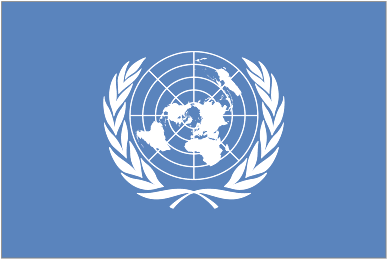
M
U
S
E
U
MSee Apsel, Joyce (2008), "Peace & human rights education: The UN as a [virtual] museum for peace," pp. 37-48, in Anzai, Ikuro, et al, ed. by (2008), 6th International Museums for Peace Conference, Kyoto (Japan). 



July 25, 1962 - Sagamore Hill National Historic Site, National Park Service (NPS), 12 Sagamore Hill Road, Oyster Bay, New York (USA). Home of Thodore Roosevelt from 1885 until his death in 1919. Known as the "Summer White House" during his presidency. Theodore Roosevelt [1858-1919] was US President 1901-1909 and received the 1906 Nobel Peace Prize.
%20copy.jpg)
September 28, 1966 - T.M.C. Asser Instituut, The Hague (Netherlands). "A leading research institute in the fields of Private and Public International Law, European Law and International Commercial Arbitration." Dutch jurist Tobias Michael Carel Asser [1838-1913] and Austrian pacifist Alfred Fried [1864-1921] shared the Nobel Peace Prize in 1911.
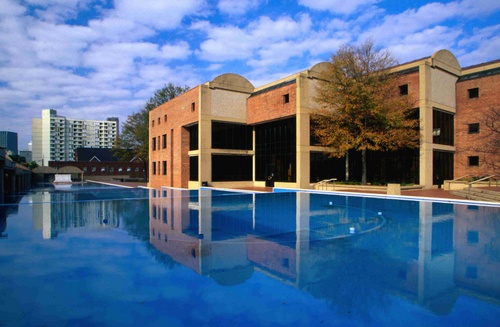

1968 - Martin Luther King, Jr., Center for Nonviolent Social Change, Inc., Atlanta, Georgia (USA). Includes King's tomb (in lake in photo), an eternal flame, Rosa Parks room, and Mahatma Gandhi room. Click here for additional information. Entry #242 in the "Peace Movement Directory" by James Richard Bennett (2001). (Martin Luther King, Jr. received the Nobel Peace Prize in 1964. He was assassinated in Memphis, Tennessee, on April 4, 1968.)

H
O
U
S
EM
U
S
E
U
M
1976 - Ralph Bunche Peace & Heritage Center, South Los Angeles, California (USA). Boyhood home of Ralph Bunche [1903-1971] who received the 1950 Nobel Peace Prize. . Declared a Historic-Cultural Monument (HCM #159) in 1976 by the Los Angeles Cutural Heritage Commission and listed in the National Register of Historic Places in 1978.




1978 - Peace Pentagon (Muste Building), A.J. Muste Memorial Institute, 339 Lafayette Street, New York City, New York (USA). Organized in 1974 to carry forward the commitment of A. J. Muste [1885-1967] to nonviolent radical change, the institute bought the "Peace Pentagon" office building in 1978 to provide a stable and affordable base for itself and other activist groups in New York City. Now in need of major repairs and in danger of being sold. Click here for "Save the Peace Pentagon."
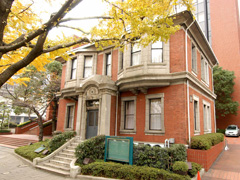
H
O
U
S
E1979 - Toda Peace Memorial Hall, Yamashita Park, Yokohama (Japan). "One of seven established across the country as part of Soka Gakki's effort to promote the message of peace in Japan." Named for Josai Toda [1900-1958]. House was originally constructed in 1922 for the British delegation to Japan.

H
O
U
S
E
1979 - Elihu Root House, 101 College Hill Road, Clinton, New York (USA). Purchased by Root as a summer home in 1893. Named to the National Register of Historic Places and declared a National Historic Landmark in 1972, at which time it was still owned by Root's descendants. Located on the campus of Hamilton College, an institution with which Root was affiliated throughout his life. The house was acquired by Hamilton College in 1979. Elihu Root [1845-1937] received the 1912 Nobel Peace Prize.


H
O
U
SE1979 - Martin Buber House, Kreis Bergstraße, Heppenheim, Hessen (Germany). Inhabited by Martin Buber [1878-1965] & his family from 1916 until 1938 when they moved to Palestine. Contents destroyed during Crystalnacht. Became headquarters of International Council of Christians & Jews (ICCJ) in 1979.

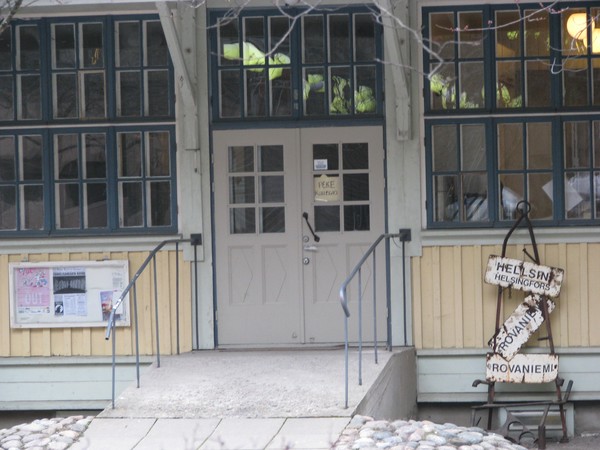
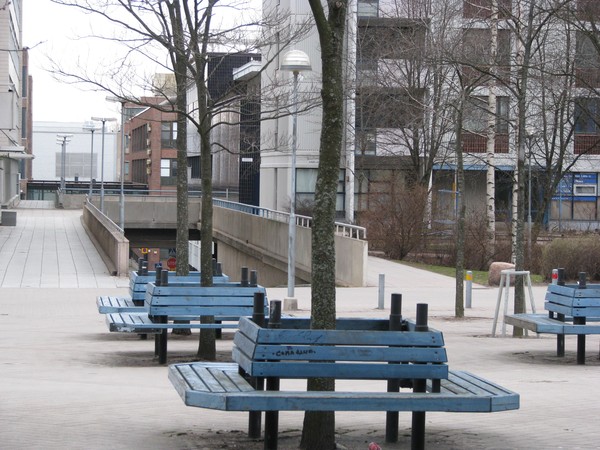
H
O
U
S
ENovember 26, 1986 - "Rauhanasema / Fredsstation / Peacestation / Peace House," Peace Square, Veturitori, Itä Pasila, Helsinki (Finland). Railroad station originally constructed in 1915. Google translation: "In 1984 Peace Union, was awarded a bid of 15 000 DM... The window was a peace sign & the banner: mobilization for peace. The building was towed to the current site. The house weighing 150 tonnes, 10 tonnes less than the blue whale, like the little boy said, inter... The station is growing corner of the apple tree, which is the gift of a peace conference of psychologists in 1986." Right image is "view from the Peace House." Information courtesy of Doug Fry.

H
O
U
S
EM
U
S
E
U
M
Mothers Day 1988 - Peace Abbey, 2 North Main Street, Sherborn, Massachusetts (USA). Three-acre "Multi-faith retreat center." See peace museums for longer description. Entry #472 in the "Peace Movement Directory" by James Richard Bennett (2001).

H
O
U
S
EM
U
S
E
U
M1988 - Lower East Side Tenement Museum, 97 Orchard Street, New York, NY (USA). "Built on Manhattan's Lower East Side in 1863, this tenement apartment building was home to nearly 7000 working class immigrants. They faced challenges we understand today -- making a new life, working for a better future, starting a family with limited means. In recognizing the importance of this seemingly ordinary building, the Tenement Museum has re-imagined the role that museums can play in our lives." Video | Website | National Park Service (NPS).


1994 - Centre Mondial de la Paix, des libertés et des droits de l'Homme, Palais Épiscopal, Verdun, Lorraine (France). Implanté dans le superbe palais épiscopal dessiné en 1723 par Robert de Cotte, premier architecte du roi, et classé monument historique, il délivre une note d'espérance à Verdun, aujourd'hui 'Capitale Mondiale de la Paix.'"

June 1995 - World Peace Pavilion, Ferry Terminal Park, Dartmouth, Nova Scotia (Canada). Symbol of unity and solidarity amongst the people of the world. Site of G7 Summit in June 1995, and officially opened by the seven visiting foreign ministers. The triangular shaped structure displays an international collection of rocks and artifacts contributed by 80 countries in every corner of the globe.

1996 – Visitors Center, Martin Luther King, Jr., National Historic Site (NPS), Atlanta, Georgia (USA). Museum about Martin Luther King, Jr., and the civil rights movement. Opened in time for the Olympic Games in the Summer of 1996.


December 5, 2001 - Joan B. Kroc Institute for Peace & Justice (IPJ), University of San Diego, San Diego, California (USA). Entry #119 in the "Peace Movement Directory" by James Richard Bennett (2001).
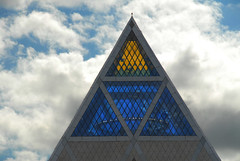

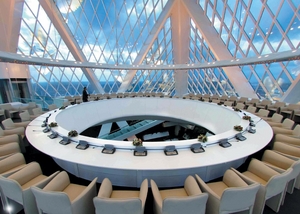

June 2006 - Palace of Peace & Reconciliation, Astana (Kazakhstan). Also known as Palace of Peace & Accord. First used for Congress of Leaders of World and Traditional Religions. Click here for info about a nearby statue of President Nursultan Nazarbayev dedicated on October 20, 2009.
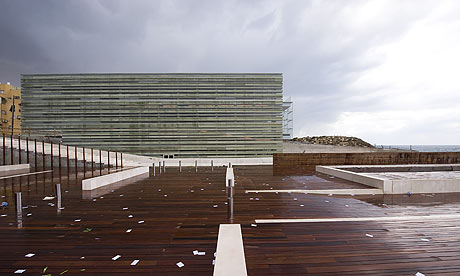


October 27 or 28, 2008 - Peres Peace House, Jaffa (Israel). "A magnificent building of huge green blocks, which cost $15 million, three times the original estimate. The building is windowless & air-conditioned throughout & blocked off from its surroundings, which are home to a poor Arab population. Its faces the sea, as though its builders were hinting that the chance for peace lies in the West, beyond the sea, & not in the East, where neighbor enemies dwell." Named for Shimon Peres and dedicated on the tenth anniversary of the Peres Center for Peace.

Future - Maharishi Peace Palaces, c/o Maharishi Vedic City, Fairfield, Iowa (USA). To be constructed in many large cities by the Maharishi Vedic Education Development Corp. (MVED). "Will offer... the knowledge and practical programs for peace and enlightenment, for a healthy, happy, more creative, more fulfilling and successful life through the Transcendental Meditation program."











